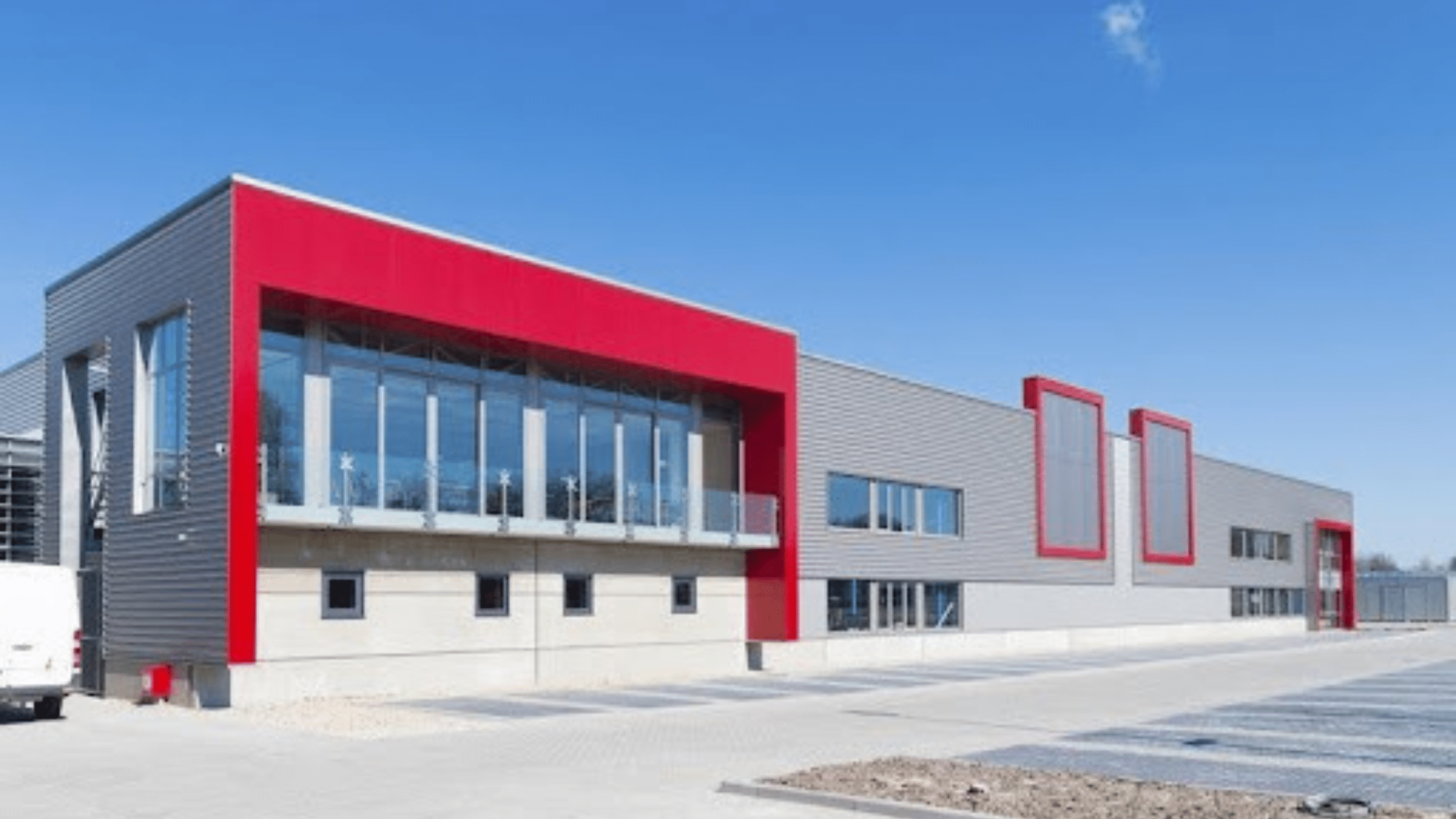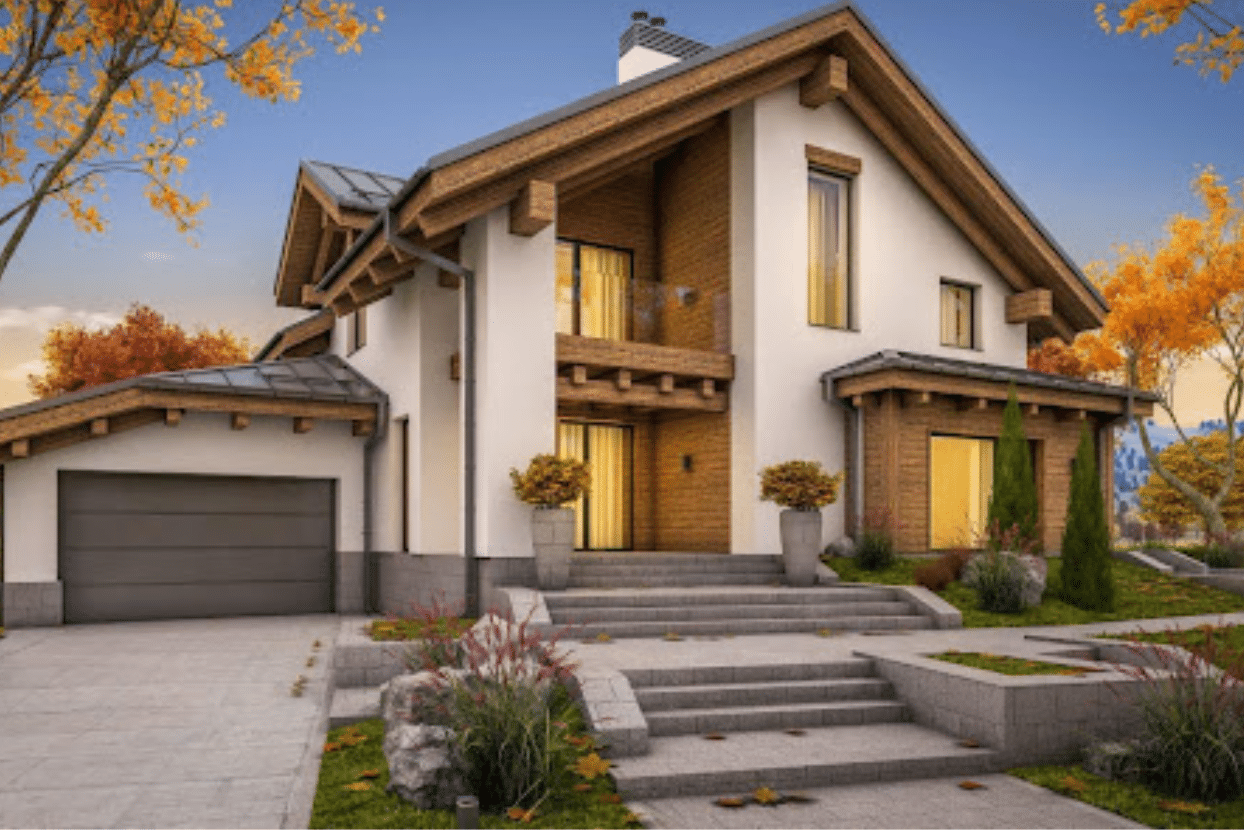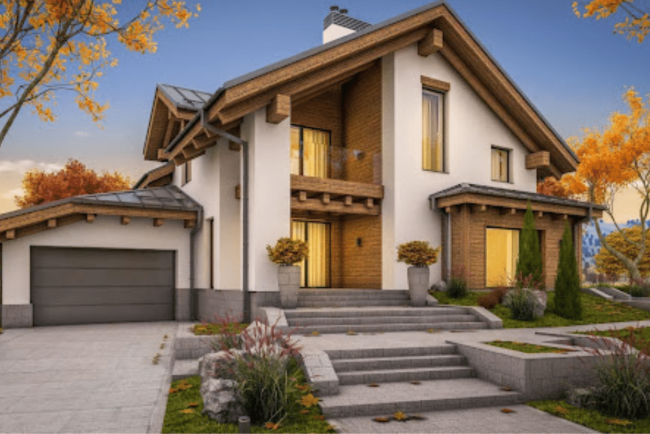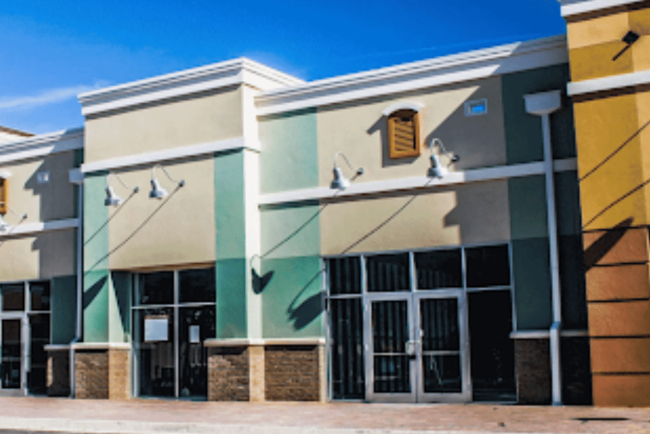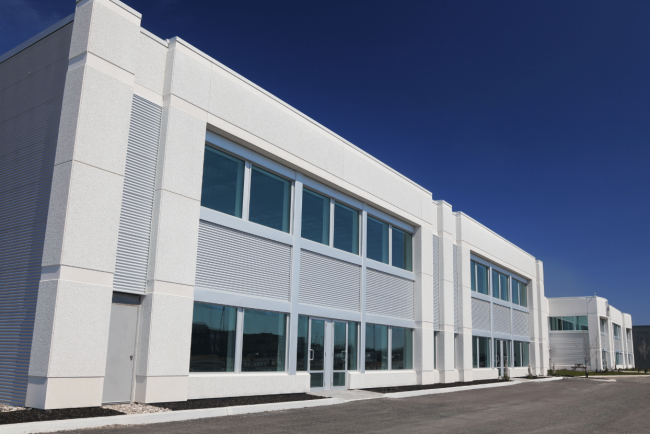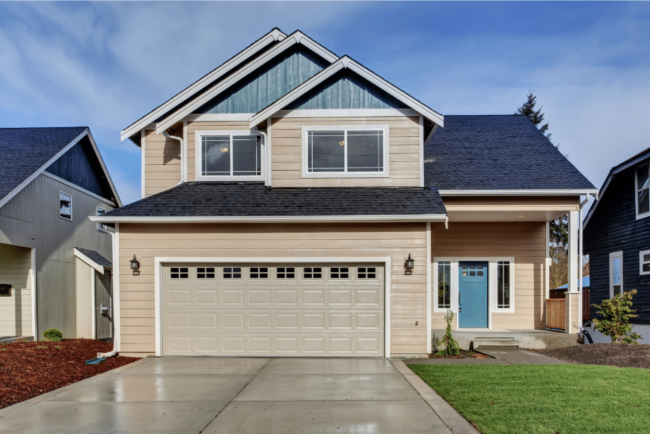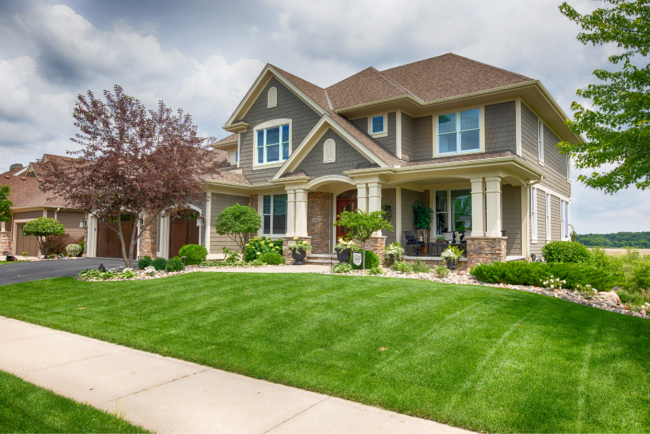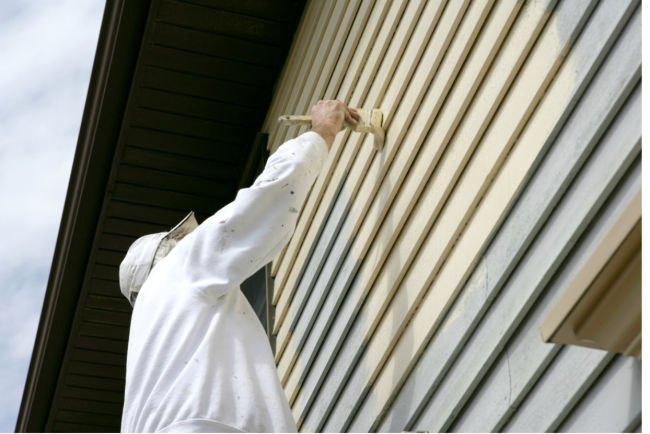
Hey there, eco-warriors and paint enthusiasts! Ever find yourself staring at those dreary walls, wondering if your commercial building’s exterior could use a splash of color? Well, before you unleash your inner Picasso, let’s talk about the green side of painting – literally!
If you are worried about the environmental impact of paints, you are not alone. Toxic chemicals in traditional paints can promote air pollution. They often contain highly volatile organic compounds that are harmful to the environment. Also, such paints can cause health problems like migraines, nausea, and respiratory allergies, which can impact the health of team members.
But fear not, eco-friendly exterior paint offers a reliable solution! It’s like the superhero of the paint world. This type of exterior paint has the same quality and durability as traditional exterior paint and has minimal environmental impact. It can also upgrade the appearance of a commercial property and maintain its look.
In this article, you will learn what eco-friendly exterior painting is about, look at its advantages, get an outline of eco-friendly exterior painting options to help you choose the right paint, and lastly, how you can protect your environment when painting your commercial property.
The Advantage of Eco-Friendly Paints
Picture this: paints that are as gentle as a kitten’s purr, containing organic goodies like citrus, balsam, and milk protein. No toxic fumes, no headaches – just pure, unadulterated painting bliss. Plus, they let your walls breathe because even buildings need to catch their breath sometimes.
Here are some advantages of using eco-friendly paints, including:
- They help lower the amounts of toxic chemicals tossed into the air and water resources.
- They contribute to a healthier population by reducing the environmental pollution that might result in chronic respiratory diseases.
- They help improve the curb appeal of a building, as they can create a more natural and welcoming atmosphere.
- They are sometimes more durable and resilient than traditional paint.
- They are highly sustainable and, as a result, improve the reputation of your commercial building.
- They have better abrasion resistance, color retention, and paint coverage when used for exterior painting.
These advantages are just the icing on the cake. With eco-friendly paints, the amount of return on investment you get is more than you will get with a traditional commercial exterior paint. Choosing eco-friendly paints isn’t just good for your conscience, but they also make your building look like a million bucks – without breaking the bank.
Eco-friendly Exterior Painting Options
Low VOC, natural, recycled – oh my! With so many eco-friendly options to choose from, you’ll feel like a kid in a candy store. Whether you’re into earthy tones or vibrant hues, there’s a paint out there for you
1. Low VOC Paints
Low-VOC (Volatile Organic Chemicals) paints are one of the best eco-friendly paints available today. As the name implies, the amount of VOCs present in the paint is very low. As a result, they are less likely to release toxic chemicals into the air.
One of the best brands for Low VOC paints are from Sherwin Williams. Their paints are highly durable, Low or Zero VOC, Greenguard certified, and are available in a wide range of colors. Sherwin Williams have been around for many years, making the,m an excellent choice to get low VOC exterior paints.
2. Natural Paints
Natural paints are another excellent eco-friendly option for commercial exterior painting. Brands like Bioshield offer natural exterior paints made from natural clay, casein, lime, and minerals. They are as natural as they can be, making them free from toxic chemicals. As an added advantage, they are biodegradable and VOC-free, making them less harmful to the environment and human health.
3. Recycled Paints
Another great option to consider is recycled paints. Recycled paints are paints that have been reprocessed or recycled from leftover paints, such as latex and other post-consumer waste paint. Brands like Behr and Sherwin Williams offer recycled paints, and you can get them at any Home Depot.
This paint option is durable and effective. Safe to say, it is just as effective and durable as new paint, maybe even more durable. This can be attributed to the fact that during the reprocessing, impurities and contaminants that affect the quality of new paints were removed. With recycled paints, you save more on new paint, save energy, and reduce gas emissions.
4. Water-based Paints
Not only are they eco-friendly, they are also a breeze to clean. It’s like magic, but without the wand (or the rabbit).
Water-based paints, otherwise known as latex paints, are another eco-friendly paint gracing the market today. Water-based paints do not contain VOCs, unlike their oil-based partners. Water-based paints are easier to clean since stains or dirt on them can be washed or cleaned with water. The plus side is that it dries faster than oil-based paint. This way, little to no toxic fumes are released into the air.
A good brand for this paint is Benjamin Moore. Although they are cost-effective, they are of very high quality.
How to Protect Your Environment Using Eco-friendly Paints
Now, let’s talk about how to be a responsible painter, shall we? As a commercial property owner, you have a responsibility to protect the environment when planning your commercial exterior painting.
1. Use eco-friendly paints
Without a doubt, one of the best ways to protect your environment when painting the exterior of your property is to use eco-friendly paints. As explained above, they are made with low or zero VOC content, which means they emit fewer harmful chemicals into the air.
2. Use eco-friendly primers
Aside from eco-friendly paints, there are also eco-friendly primers. So, when looking for the right paint to use for your commercial exterior painting, look for primers with low VOCs or are made with latex, petroleum ingredients, and other eco-friendly ingredients. Not only are they contributing factors to environmental protection, they also make your commercial exterior painting durable and long-lasting.
3. Consider Weather Conditions
Weather can play a big role in the environmental impact of painting. As a result, one of the rules of exterior painting is to choose the right time to paint. There are advantages and disadvantages of painting during certain weather conditions.
For instance, painting in hot weather can cause paint to dry too quickly, leading to higher VOC emissions. In contrast, painting in cold weather can cause paint to dry too slowly, leading to higher energy use. To know the right time to paint, consult with your commercial exterior painting contractor. It is important to ask the right questions in this regard.
Dispose of painting materials properly
Nobody wants toxic sludge in their water supply! Properly disposing of paint and painting supplies is a critical part of ensuring a safe and sustainable environment. Here are some tips for responsible disposal:
- Take leftover paint to a hazardous waste disposal facility. The city of Atlanta recommends LIVE THRIVE or you can search for hazardous waste disposal near me.
- If you still have some paint left in the can, maybe a small amount, leave it to dry out. Open the lid and let oxygen do the rest. This hardens the paint. If you want to speed up the process, put it in a sunny spot. Once hard, you can now place the can in the recycle bin.
- If you don’t want to air-dry or sun-dry, you can buy a paint hardener.
- Clean paint brushes, rollers, and other paint tools with water or mineral spirit and keep them in a cool and safe space. If you will not be using them again, properly dispose of them.
- Do not pour leftover paints down the drain.
How to Clean Your Paint Brushes and Where they Should Be Cleaned
- For Natural Paints
In a sink or a bucket, simply rinse the paint brushes and empty cans. Because they are made of plants, clay, plants, or milk protein, they do not require any special clean up treatment. You can safely pour the wastewater on the ground or down a drain.
- For Water-based Paints
Before cleaning, ensure you have gloves on, or you have a wire paint comb nearby. Squeeze any excess paint left on the brush into the can. You can use your hand or the wire paint comb. If the paint has dried up, soak it in water first, before squeezing it into the can. Use a dry newspaper to remove more paint. Once done, rinse the brush with warm soapy water.
Note: The water-based cleaning method should be used for other paint types.
Where Paint Brushes Should Be Cleaned
In a professional setting, it’s essential to clean paint brushes properly to maintain hygiene and ensure optimal performance. Here are some tips on where to clean paint brushes:
- Designate a specific area for cleaning paint brushes, preferably with access to running water. This could be a sink in a utility room, a designated cleaning station, or an outdoor area with a hose.
- Use containers or buckets to catch rinse water and paint residue. This helps prevent paint particles from entering drains and contaminating the environment.
- Dispose of paint waste and cleaning materials responsibly, following local regulations and guidelines.
- Ensure where you are cleaning has adequate ventilation, especially when using solvents such as paint thinner. This helps minimize exposure to fumes and ensures a safe working environment.
Conclusion: Paint Happy, Paint Green!
So there you have it, folks – a short guide on eco-friendly exterior painting that even Mother Nature would approve of. And if you’re in the market for a painter who cares as much about the environment as they do about quality, give Southern Perfection Painting, Inc. (SPPI) a shout. We’ll make sure your building looks fabulous, without leaving a trail of destruction in our wake.
With SPPI, you can be assured that your commercial building paint will be durable, last longer, and look better.
Call us today at 770.985.3075
Send a message via [email protected].
Get a free estimate online.
You can also connect with us on social media through Twitter, Facebook, Instagram, or Pinterest.




